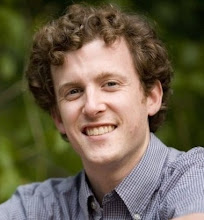We led off with an exercise that forced them each to make a short list of the most significant films of all time; then they had to pair up and consolidate their lists (dropping a few films in the process), then pair with another pair, etc. The idea was to simulate a process of consensus-building when people are operating with different criteria.
Then we segued into some actual historical information. Using my notes from Dr. Rowe's New Testament class and a few other resources, I put together a brief timeline. During the class I also made a (probably ill-advised) attempt to explain Gnosticism in about four minutes, in order to show why the Gospels of Thomas, Peter, and Judas were all excluded from the canon. I was tempted to point out just how crazy they seem - the Gospel of Peter describes a walking, talking cross that followed Christ out of the tomb (see paragraph 10) - but given all the water-walking, blind-healing, and resurrection in the canonical Gospels, my hands were tied.
I think the thing I most regret not making time for was a discussion of what "Holy Scripture" means. We give that unique title only to these certain texts; what does that mean for how we approach them? How does this understanding guide our interaction with other texts? Is it bad to read noncanonical gospels? What about other nonscriptural texts that we revere. Can we read Augustine in church, or Luther? Can we read passages from MLK's speeches? Can we compose liturgies using the words of Bono?
This week I'll be working on figuring out how to give a one-hour primer on the entirety of the Old Testament. I have a sinking feeling that Ecclesiastes is going to get the short end of the stick.

2 comments:
I like the list-of-films exercise. Had I been there, I would have thrown a wrench in by listing only Pasolini's The Gospel According to St. Matthew.
I like to think of the question of what texts are appropriate in terms of concentric circles. Starting, for Protestants, with the Deuterocanonical texts, which Luther (I think?) said were more important than any other texts save the canon itself. (Evangelicals hate being reminded of this.)
(Then the noncanonical texts from the early church--a walking cross here and a miraculous-killing-of-Jesus'-childhood-friends there won't hurt us now. Followed by, in order, St. John of the Cross, Julian of Norwich, Martin Luther King Jr., Wendell Berry, and Elsa Tamez. No one else. And especially no song lyrics.)
Also: I have no problem with a U2-themed Eucharist, so long as they resist the urge to call it a...no, they didn't resist that urge, did they?
I also like the film exercise, as well as these summaries. Kindly continue them.
Post a Comment